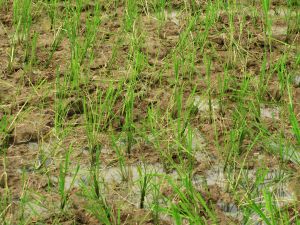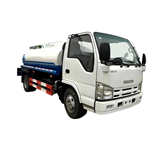The flood irrigation process involves fields being inundated with water, which allows the water to soak into the soil and irrigate grains and plants.
Henk de Graaf, managing director at Industrial Automation Group, said apart from areas where water is plentiful, flood irrigation should be a thing of the past.
"A lot of water is wasted through evaporation in flood irrigation, whether it be leakage in the channels or whether it’s through evaporation once the field has been flooded," de Graaf said.
However, de Graaf concedes it can be expensive for farmers to replace flood irrigation systems with alternatives, such as centre pivots, subsurface irrigation or overhead irrigation.
The alternatives have different advantages. Queensland’s Primary Industries and Fisheries department says centre pivots are easy to manage as dry ground is always directly in front of the machine.
"If you can draw a big circle anywhere on your land without interfering with the particular size of the block, a centre pivot is probably the most efficient way of using water without having to put large infrastructure in place," de Graaf said.
This is due to centre pivots using just one central supply of water with a large arm which moves around in a circle.
For farmers with smaller blocks of land or land with trees or fences around it, de Graaf recommends two other alternatives – sprinklers mounted on the top of a pole or suspended sprinklers from an overhead cable system.
"The benefit of the overhead cable system is it can be done on very small blocks and provide very efficient irrigation without having anything in the ground, just like the centre pivot system," he said.
"If you’ve got a lot of trees and fences on the land, then forget about centre pivots because as soon as you have centre pivots which can only do half a circle, then the price of the pivot basically doubles with regard to the cost per hectare.
"If you’ve got animals in the field then just putting a simple sprinkler on a pole is not going to help either. So you’re looking at overhead irrigation or subsurface irrigation."
Although flood irrigation can be wasteful of water, the advantage is it does not require electricity or energy to operate it. Water is pumped through channels to different locations, with siphon hoses bringing the water to the surface of the land. Alternative systems, however, do require nearby electricity, which can pose problems for some farmers.
De Graaf said farmers can not only save water but also increase their crop production using different irrigation methods. Some governments are already recognising the benefits of alternative systems, with WA gradually forcing farmers to move away from flood irrigation, according to de Graaf.
However, without government subsidies and support, it appears unlikely farmers will be able to afford new irrigation systems.
"I’m convinced if there are sufficient incentives for farmers to move from flood irrigation to irrigation, then a lot of farmers will want to do it that way because it does make life easier for them," de Graaf said.
"With proper irrigation, whether it is centre pivots or overhead irrigation or subsurface irrigation, you can automate all of those and you can make it react on weather patterns as well. There can be savings all around that way."
Ultimately, the type of land will determine what type of irrigation will be most efficient. De Graaf advises farmers should first look at the type of land you have and then examine what it is you want in a system. For example, how many blocks do you need to divide your land in in order to efficiently water it?
"There are quite a few issues to be taken into account. Probably the best thing for any farmer to do if they’re serious about irrigation is talk to an irrigation professional. They’ll be able to identify what needs to be done," de Graaf said.
"But it is important for the farmer to come with an open mind and don’t come with the question of ‘can I have one of those and what is the cheapest one?’ Leave it open with the professionals and they’ll come up with a good solution."



-160x160-state_article-rel-cat.png)



-160x160-state_article-rel-cat.png)






-160x160-state_article-rel-cat.png)

